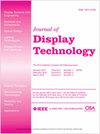三维显示的物理信息基础
Q Engineering
引用次数: 1
摘要
众所周知的信息三维显示器组(进一步的3D显示器),习惯名称为“立体”、“全息”、“体积”、“积分成像”、“光场”等,在历史上形成时没有任何共同的分类标准。然而,作为物理(光学)信息系统的3D显示器应该具有基本的分类标准。本文以物理信息模态(进一步模态)的形式引入了这些标准,用于识别3D显示器工作介质中3D图像记录的物理信息格式。模态基于四个物理信息类别,这些物理信息类别被定义为两种3D场景数据表示(对象O表示和球面波的角谱S表示)和每个表示实现的两种物理形式(射线光学R和衍射光学D概念)的四种可能组合。3D显示的模态定义了工作介质中3D图像记录的主要物理信息特性。考虑到人类视觉系统的相关心理生理特性,真实的3D图像特性从最初的特性开始。人类视觉系统在离开工作介质之后直接感知已经通过3D显示器的光学方案的3D图像光分布。讨论了所提出理论的局限性。本文章由计算机程序翻译,如有差异,请以英文原文为准。
Toward the Physical-Information Fundamentals of Three-Dimensional Displays
The well-known groups of information three-dimensional displays (further-3D displays) with habitual names “stereoscopic,” “holographic,” “volumetric,” “integral imaging,” “light field,” etc., were historically formed without any common classification criteria. However, 3D displays as physical (optical) information systems should have the fundamental classification criteria. Such criteria are introduced in this paper in the form of physical-information modalities (further - modalities) identifying the physical-information formats of 3D image recordings in the working media of 3D displays. The modalities are based on four physical-information categories defined as four possible combinations of two kinds of 3D scene data representation (the object O representation and the representation by angular spectrum S of spherical waves) and two physical forms of each representation implementation (the ray optics R and diffraction optics D concepts). The modality of 3D display defines the primary physical-information properties of 3D image recording in the working medium. The true 3D image properties follow from the primary ones taking into account the relevant psychophysiological properties of the human visual system. The human visual system directly perceives 3D image light distribution that have passed through the optical scheme of 3D display after exiting the working medium. The limits of the proposed theory are discussed.
求助全文
通过发布文献求助,成功后即可免费获取论文全文。
去求助
来源期刊

Journal of Display Technology
工程技术-工程:电子与电气
CiteScore
1.50
自引率
0.00%
发文量
0
审稿时长
2.8 months
期刊介绍:
This publication covers the theory, material, design, fabrication, manufacturing and application of information displays and aspects of display technology that emphasize the progress in device engineering, design and simulation, materials, electronics, physics, and reliability aspects of displays and the application of displays. The Journal is sponsored by EDS, seven other IEEE societies (BT, CES, CPMT, IA, IM, PHO and SSC) and the Optical Society of America (OSA).
 求助内容:
求助内容: 应助结果提醒方式:
应助结果提醒方式:


